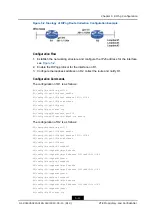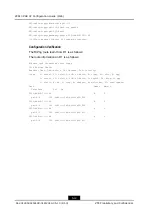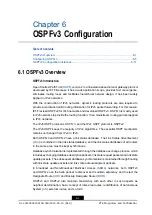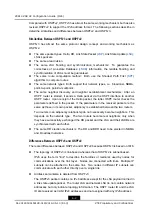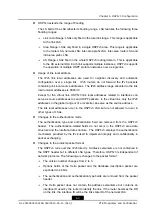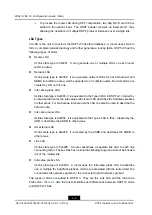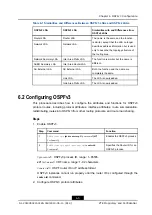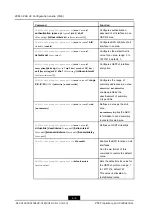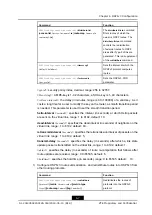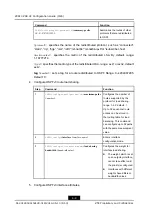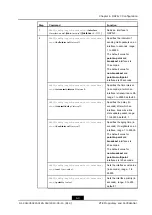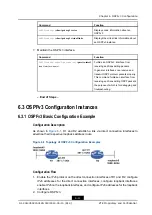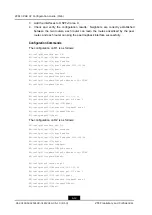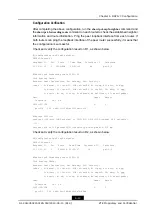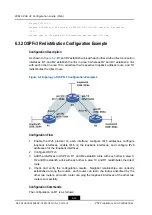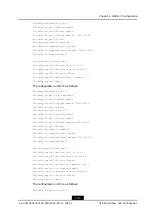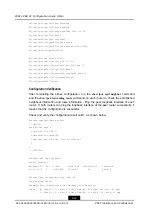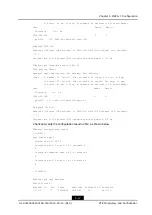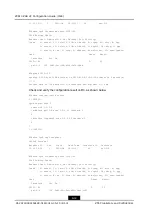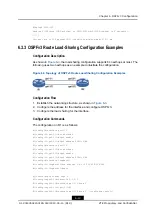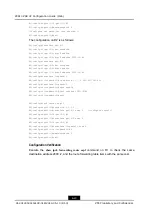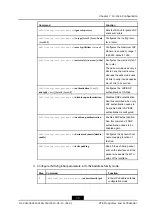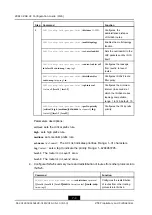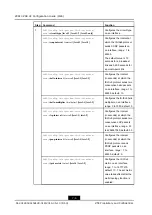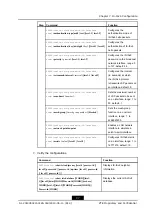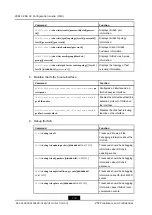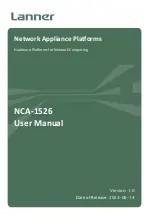
Chapter 6 OSPFv3 Configuration
Configuration Verification
After completing the above configuration, run the
show ipv6 ospf neighbor
command and
the
show ipv6 forwarding route
command on each router to check the established neighbor
information and route information. Ping the peer loopback interface from each router. If
both routers can ping the loopback interface of the peer router successfully, it means that
the configuration is successful.
Check and verify the configuration result on R1, as shown below.
R1(config)#show ipv6 ospf neighbor
OSPFv3 Process 1
Neighbor ID
Pri
State
Dead Time
Interface ID
Interface
10.10.10.10
1
FULL/BDR
00:00:35
46
gei-3/6
R1#show ipv6 forwarding route 3550::55
IPv6 Routing Table:
Headers: Dest: Destination, Gw: Gateway, Pri: Priority;
Codes
: K: kernel, I1: isis-l1, SFN: sf-nat64, R: ripng, AF: aftr, B: bgp,
D: direct, I2: isis-l2, SLN: sl-nat64, O: ospfv3, D6: dhcp, P: ppp,
S: static, N: nd, V: vrrp, A: address, M: multicast, UI: user-ipaddr;
Dest
Owner
Metric
Interface
Pri
Gw
3550::55/128
O
1
gei-3/6
110
fe80:12::2d0:d0ff:feaf:cc10
R1#ping6 3550::55
sending 5,100-byte ICMP echo(es) to 3550:0:0:0:0:0:0:55,timeout is 2 second(s).
!!!!!
Success rate is 100 percent(5/5),round-trip min/avg/max= 2/2/3 ms.
Check and verify the configuration result on R2, as shown below.
R2(config)#show ipv6 ospf neighbor
OSPFv3 Process 1
Neighbor ID
Pri
State
Dead Time
Interface ID
Interface
11.11.11.11
1
FULL/DR
00:00:37
18
gei-1/3
R2#show ipv6 forwarding route 3555::52
IPv6 Routing Table:
Headers: Dest: Destination, Gw: Gateway, Pri: Priority;
Codes
: K: kernel, I1: isis-l1, SFN: sf-nat64, R: ripng, AF: aftr, B: bgp,
D: direct, I2: isis-l2, SLN: sl-nat64, O: ospfv3, D6: dhcp, P: ppp,
S: static, N: nd, V: vrrp, A: address, M: multicast, UI: user-ipaddr;
Dest
Owner
Metric
Interface
Pri
Gw
3555::52/128
O
1
gei-1/3
110
fe80:2e::2d0:d0ff:fe78:99dd
6-13
SJ-20140504150128-018|2014-05-10 (R1.0)
ZTE Proprietary and Confidential

